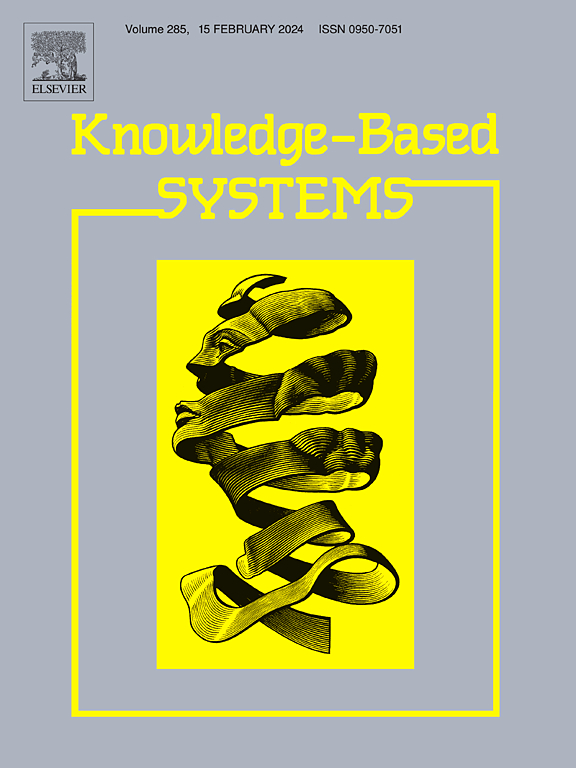GA-SmaAt-GNet: Generative adversarial small attention GNet for extreme precipitation nowcasting
IF 7.2
1区 计算机科学
Q1 COMPUTER SCIENCE, ARTIFICIAL INTELLIGENCE
引用次数: 0
Abstract
In recent years, data-driven modeling approaches have gained significant attention across various meteorological applications, particularly in weather forecasting. However, these methods often face challenges in handling extreme weather conditions. In response, we present the GA-SmaAt-GNet model, a novel generative adversarial framework for extreme precipitation nowcasting. This model features a unique SmaAt-GNet generator, an extension of the successful SmaAt-UNet architecture, capable of integrating precipitation masks (binarized precipitation maps) to enhance predictive accuracy. Additionally, GA-SmaAt-GNet incorporates an attention-augmented discriminator inspired by the Pix2Pix architecture. This innovative framework paves the way for generative precipitation nowcasting using multiple data sources. We evaluate the performance of SmaAt-GNet and GA-SmaAt-GNet using real-life precipitation data from The Netherlands, revealing notable improvements in overall performance and for extreme precipitation events compared to other models. Specifically, our proposed architecture demonstrates its main performance gain in summer and autumn, when precipitation intensity is typically at its peak. Furthermore, we conduct uncertainty analysis on the GA-SmaAt-GNet model and the precipitation dataset, providing insights into its predictive capabilities. Finally, we employ Grad-CAM to offer visual explanations of our model’s predictions, generating activation heatmaps that highlight areas of input activation throughout the network.
GA-SmaAt-GNet:用于极端降水预报的生成式对抗小注意 GNet
近年来,数据驱动建模方法在各种气象应用中,特别是在天气预报中,受到了极大的关注。然而,这些方法在处理极端天气条件时往往面临挑战。为此,我们提出了 GA-SmaAt-GNet 模型,这是一个用于极端降水预报的新型生成对抗框架。该模型具有独特的 SmaAt-GNet 生成器,是成功的 SmaAt-UNet 架构的扩展,能够整合降水掩码(二值化降水图)以提高预测精度。此外,GA-SmaAt-GNet 还采用了受 Pix2Pix 架构启发的注意力增强判别器。这一创新框架为使用多种数据源进行降水预报铺平了道路。我们使用荷兰的真实降水数据评估了 SmaAt-GNet 和 GA-SmaAt-GNet 的性能,结果显示,与其他模型相比,它们在整体性能和极端降水事件方面都有显著提高。具体来说,我们提出的架构在降水强度通常达到峰值的夏季和秋季表现出了主要的性能优势。此外,我们还对 GA-SmaAt-GNet 模型和降水数据集进行了不确定性分析,从而深入了解其预测能力。最后,我们利用 Grad-CAM 对模型的预测结果进行可视化解释,生成激活热图,突出显示整个网络的输入激活区域。
本文章由计算机程序翻译,如有差异,请以英文原文为准。
求助全文
约1分钟内获得全文
求助全文
来源期刊

Knowledge-Based Systems
工程技术-计算机:人工智能
CiteScore
14.80
自引率
12.50%
发文量
1245
审稿时长
7.8 months
期刊介绍:
Knowledge-Based Systems, an international and interdisciplinary journal in artificial intelligence, publishes original, innovative, and creative research results in the field. It focuses on knowledge-based and other artificial intelligence techniques-based systems. The journal aims to support human prediction and decision-making through data science and computation techniques, provide a balanced coverage of theory and practical study, and encourage the development and implementation of knowledge-based intelligence models, methods, systems, and software tools. Applications in business, government, education, engineering, and healthcare are emphasized.
 求助内容:
求助内容: 应助结果提醒方式:
应助结果提醒方式:


